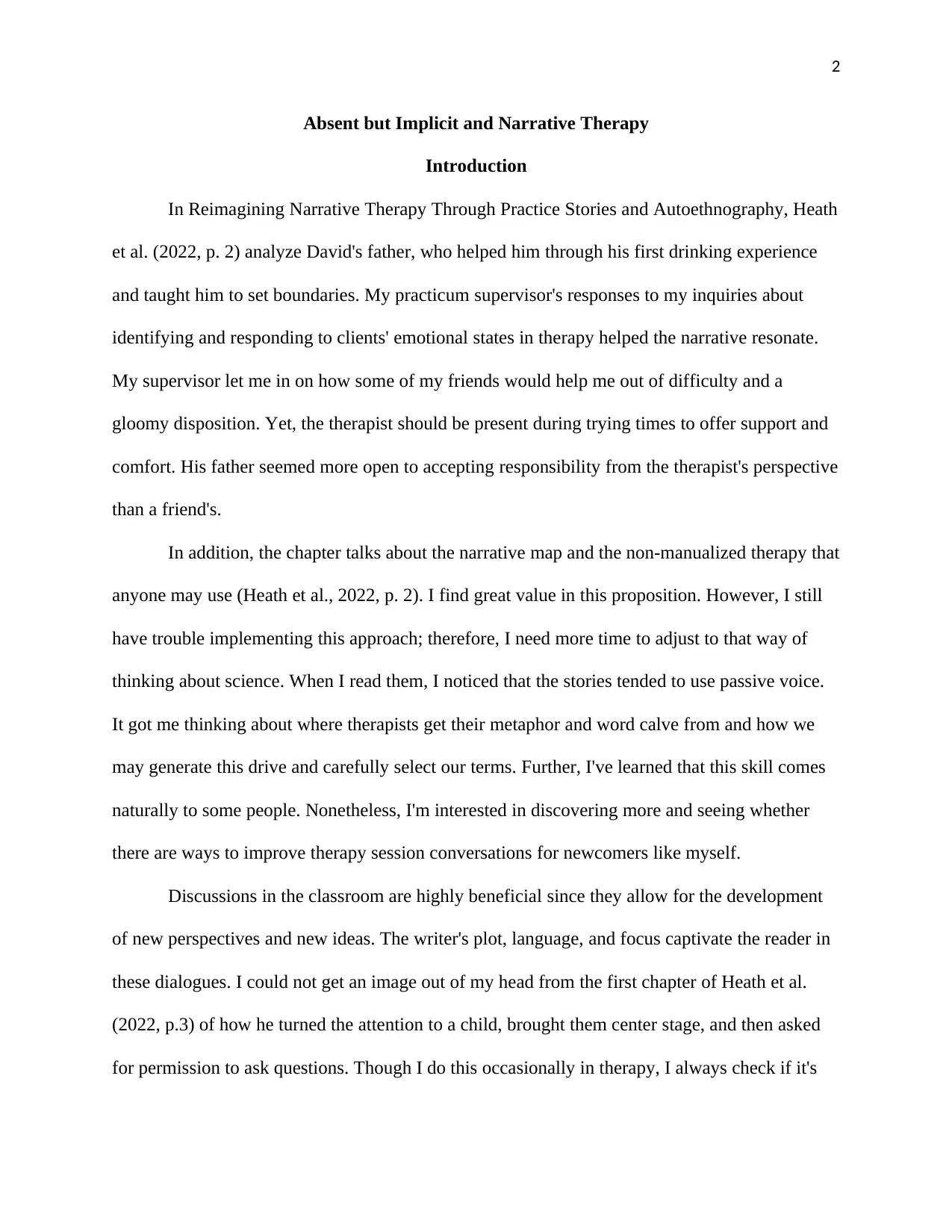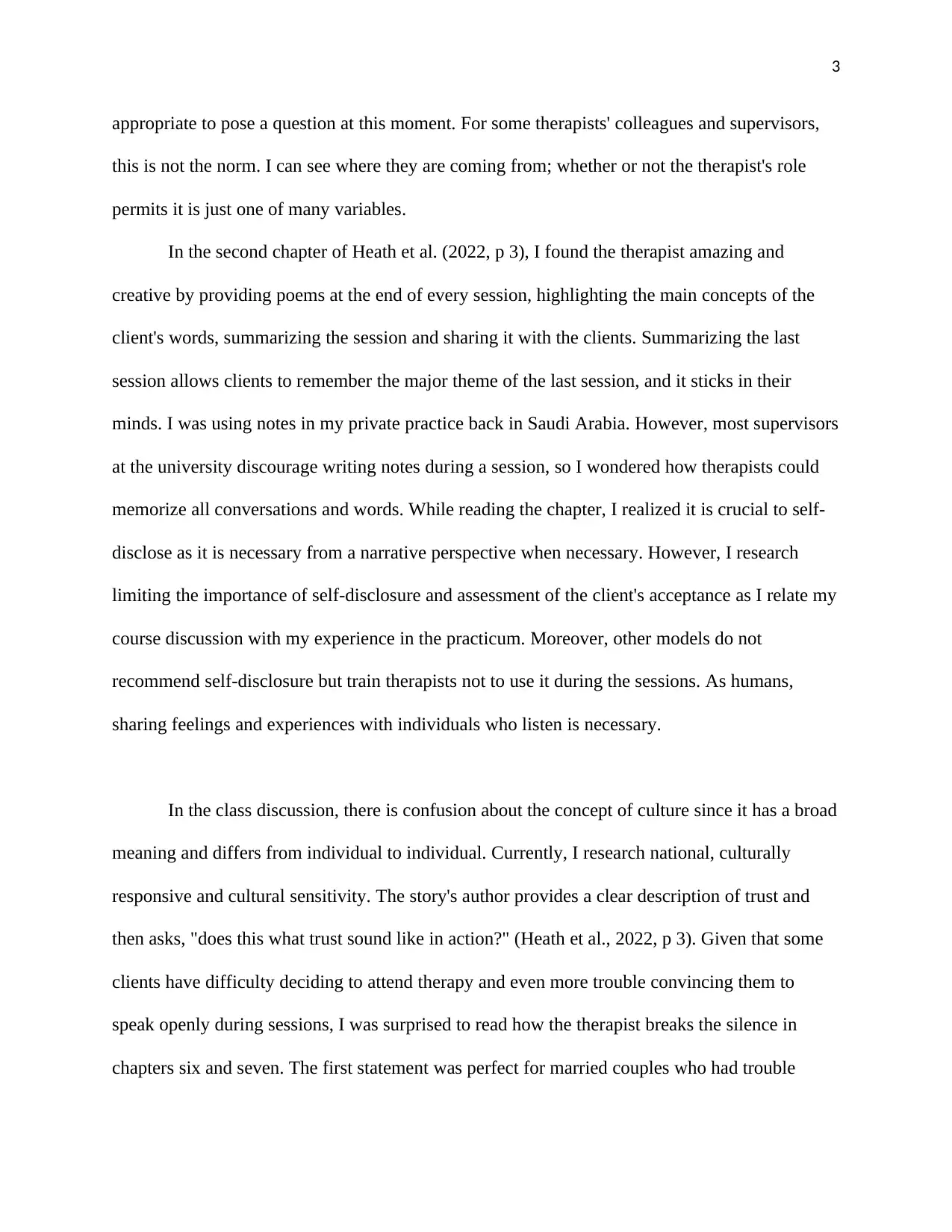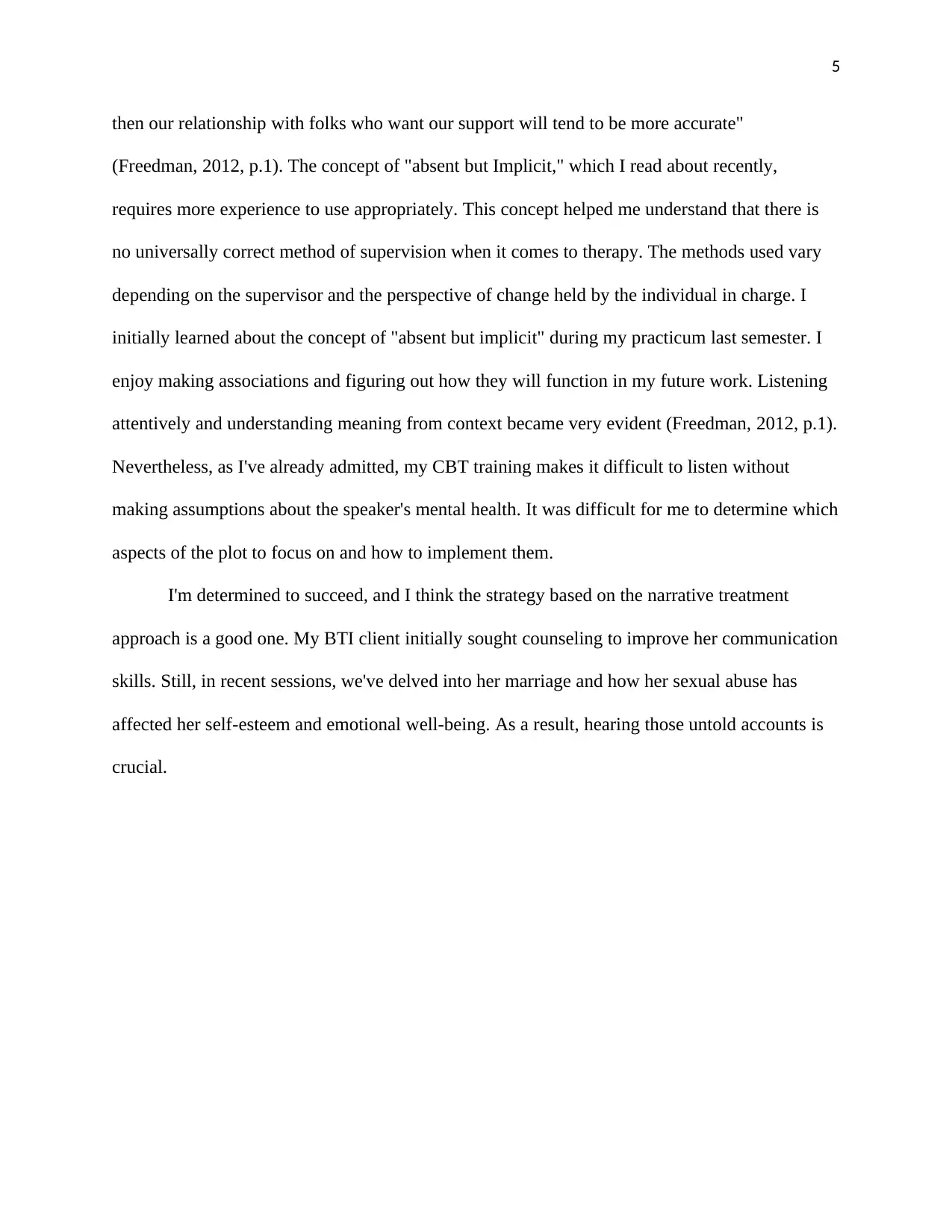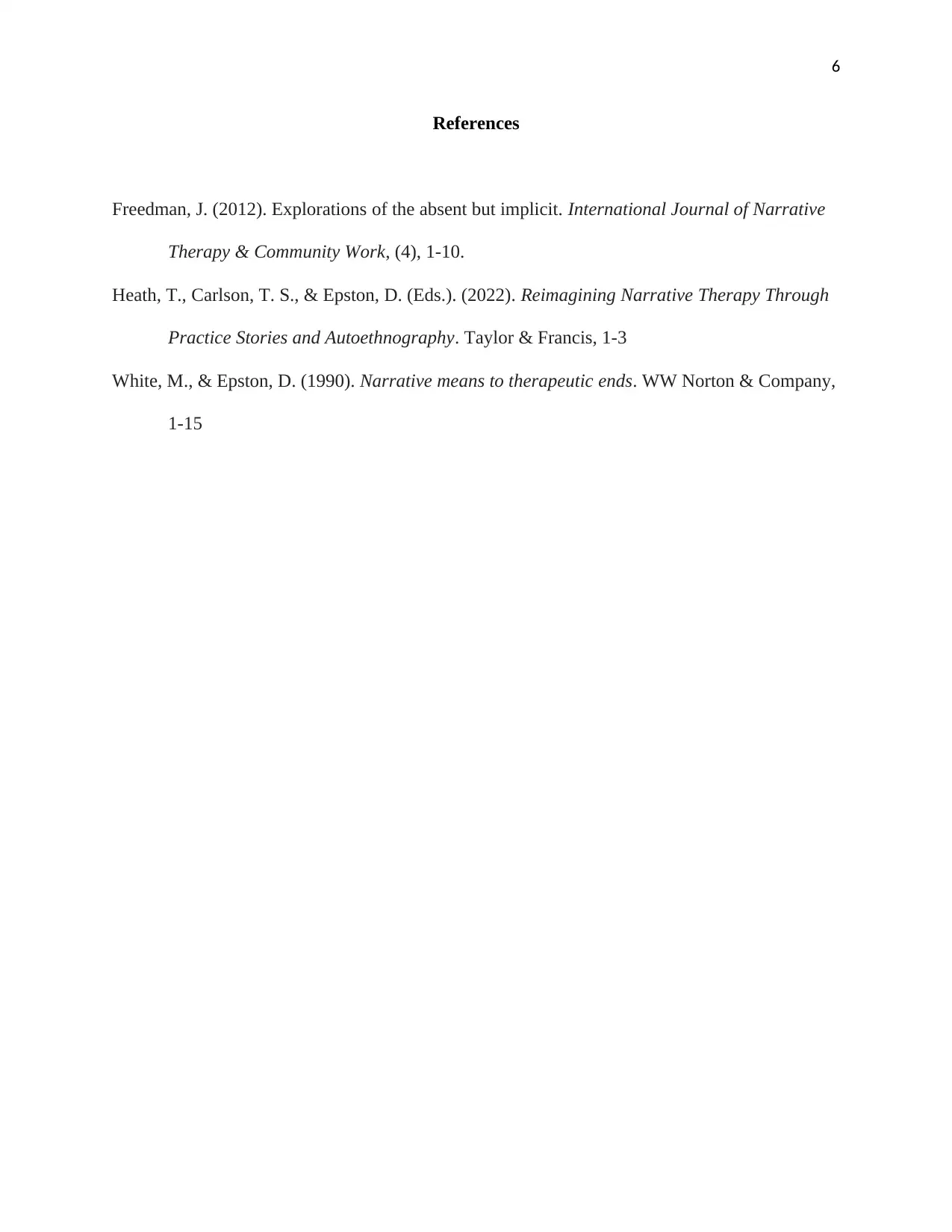In this report we will discuss about narrative therapy and below are the summaries point:-
The author reflects on personal experience and readings in a bulleted list.
In "Reimagining Narrative Therapy Through Practice Stories and Autoethnography" by Heath et al., David's father taught him valuable life lessons.
The author finds non-manualized therapy valuable but struggles to implement it.
They contemplate if therapists acquire metaphor and language naturally.
Classroom discussions are helpful in developing new perspectives and ideas.
The therapist summarizes the session with poems, while private practice notes are discouraged.
Self-disclosure is necessary from a narrative perspective but should be limited.
The author acknowledges the importance of assessing clients' acceptance of self-disclosure.
The therapist's approach in breaking the silence in chapters six and seven is inspiring.
White & Epston's "Systems to Stories, Theoretical Foundations of Narrative" is dedicated to systems theory and story structure.
The author realizes they do CBT differently from their supervisor's and a system model.
The author acknowledges their role in not knowing everything about the client and the importance of observation and inquisitive questioning.
![[object Object]](/_next/static/media/star-bottom.7253800d.svg)
![[object Object]](/_next/static/media/star-bottom.7253800d.svg)





